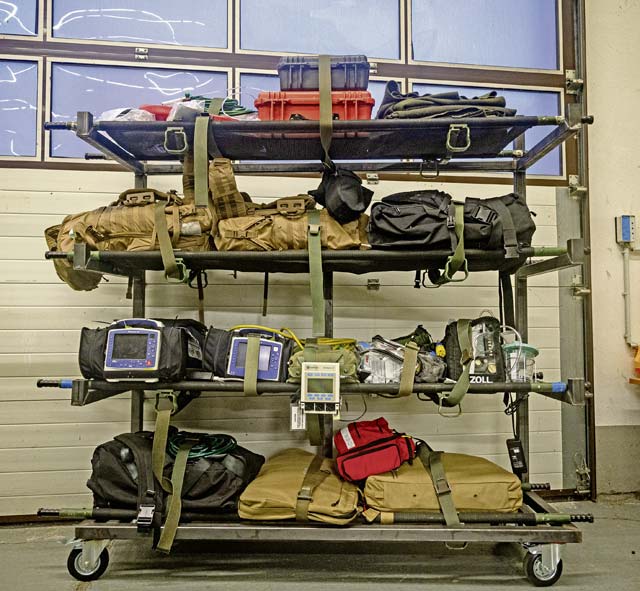At the end of September, the 86th Maintenance Squadron was tasked with the important mission of building equipment racks for Afghan evacuation operations at Ramstein Air Base.

These racks were designed to hold medical litters used as shelves to hold medical equipment. They have been primarily used by the 10th Expeditionary Aeromedical Evacuation Flight and the 86th Aeromedical Evacuation Squadron with the purpose of transporting patients and housing equipment.
While the litters are traditionally used to transport patients and store equipment during flights, they have been repurposed and now serve many purposes.
“Instead of having the gear laying on the ground we can have it organized on shelves to clear up room for more cargo and evacuees,” said U.S. Air Force Tech. Sgt. Justin Woody, 86 MXS aircraft metal technology non-commissioned officer in charge.
“I take pride in knowing how well we did our build and how quickly we were able to get it done,” Woody said. “We understood it was a time-sensitive operation, and I think our team took pride in knowing that we benefited so many people.”
Building the racks was no easy feat. It took Airmen more than 16 hours to assemble each one and required Airmen assigned to the 86 MXS to learn a new set of skills such as welding the metal together and having to learn new blueprints and designs.
“When it comes to welding, sawing and assembling frames those are things we are trained to do and do on a regular basis,” said Airman 1st Class Emily Suver, 86 MXS aircraft metal technician. “I have not done something quite like this where it holds so much significance not just to us and our military, but to evacuees.”
Airmen have not only been challenged physically but mentally as well.
“Throughout this whole experience, I learned a lot about deadlines, how to hustle and how to put the mission first,” Suver said. “Although we were sacrificing time and sleep, we did it because we understood we had to set the next crew up for success and not failure.”
The experience brought the shop together and showed levels of teamwork never before seen, Suver said.
“Everyone in my team really stepped up, they teamed up and we all just got to work,” Woody said. “There was no complaining, there was no one doing anything they weren’t supposed to be doing, everyone kind of fell into a role and become an efficient machine.”
While normally work like this is done in a deployed environment, some of the younger Airmen throughout the evacuation operations have had the chance to not only have a taste of a deployed environment but also a chance to refine their skills and operate in a more managerial position, said Woody.
“I am really proud of my team and really proud to be a part of it,” Suver said. “It was really cool to see how a shop could come together and work as efficiently and flourish under the stress of this operation.”


